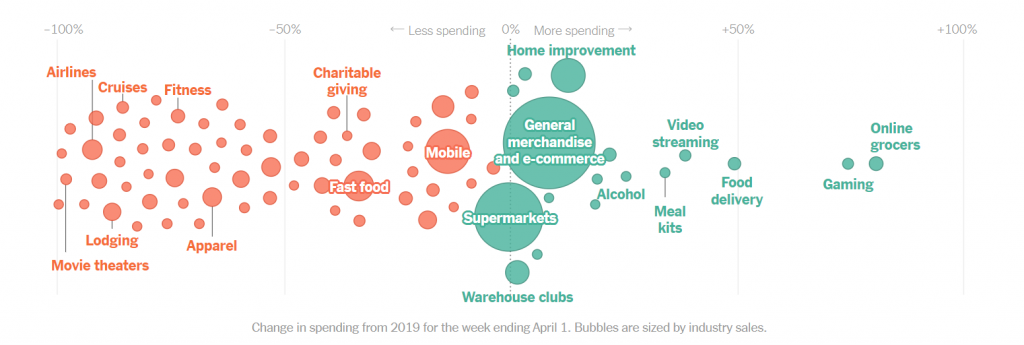As the 2020 pandemic leaks into 2021, one trend stands out. People sheltering at home need content. And lots of it. From streaming services to podcasts, from videos to internet content, they have a never-ending hunger for the next click.
Part of the response to the pandemic comprises people searching for information. When consumers have problems, they turn to the internet to find solutions. So if you don’t have great content on your website that answers your customers’ questions and explains how you can solve their problems, they’ll click away. Since we purportedly have the attention span of a goldfish, you have mere seconds to make an impact.
Deloitte conducted an interesting survey where they looked at people’s media consumption pre-COVID-19 and post to see how their tastes had changed. In a press release, they reported post-COVID-19 findings such as:
- 80 percent of U.S. consumers pay for a streaming subscription.
- 47 percent use a free ad-supported streaming service to save expenses.
- 38 percent tried a new digital activity like live-streaming.
- A third of consumers and close to half of Gen Z and Millennials relied on video games to get through.
This flood of content helped people manage the stress and uncertainty brought on by the pandemic. Take this amazing acceleration of content consumption as your chance to survey consumers with insightful questions about their wants and needs. Then, use their answers to re-evaluate your content marketing plan going forward.

What content means to your bottom line
Companies around the country and the globe had mixed reactions to the economic effects of the pandemic. Many businesses closed; others stayed open but were severely crippled. Then, there were some businesses that boosted their online sales for unprecedented growth compared to their performance pre-COVID-19.
According to Digital Commerce 360, an analysis shows amazing results:
- Companies that conservatively stepped away from content marketing spending found their sales dropped around 40 percent.
- Brands that held to their original content plan saw sales raise by 8 percent.
- Some businesses that aggressively worked a digital marketing and promotional campaign saw an increase in sales of 70 percent.
The lesson learned per Digital Commerce 360 is, “The brands that are fighting for it are taking wallet share.”
Today’s pandemic-weary consumers are ordering things online that they’ve never tried. Some are purchasing more online because that’s their only option. Either way, if you’re not out there promoting content, consumers likely won’t find you.
For those brands slow to adopt e-commerce
Brick-and-mortar retail stores, restaurants, cinemas, and other entertainment outlets were hardest hit. Then there were the mom-and-pop shops that hadn’t gotten around to going online. If you don’t have an online presence, your customers won’t know if you’re open. And if they can’t find any online content about you, they’ll find the next best option. Out of sight is really out of mind.
Are there any lingering doubts about the essential nature of of a digital presence? If you want to stay in business for the long term, invest in a digital transformation and a premiere content marketing plan. Consumers today expect fresh content that’s relatable, easy to digest, and quick to find.
The New York Times created a visual of this amazing shift in spending on digital marketing:

As BDO aptly puts it in their article about the rise of the digital economy, “It’s go digital, or go dark.”
What this means for you
You can’t stop creating content. Thanks to the fundamental change in the world today, digital content is essential. Luckily, there are many types of content people like to consume, like:
Blog posts Podcasts Webinars Audio/video | Infographics Articles Social media Website content | Newsletters E-mails E-books Livestream events |
This is not meant to overwhelm you but to show you the many options you have for creating engaging and interesting content your customers want.
The best way to make sure you’re targeting your audience appropriately is to survey them at all stages of the buying cycle. Ask them what kind of information they need in each phase, how they like to consume that content, what kinds of questions they need answered or problems solved, how often they like to get content, and where they like to get content (e.g., in their email box or on a website).
Keep digging deeper with survey questions (without being a pest) because you will need constant, consistent, and fresh content. And you’ll need a content marketing plan to capture ideas, schedule content, and track your efforts. HubSpot has a free content marketing planning template to make this process easier. Read through the directions on how to use the template, and check out the FAQs at the bottom. The more information you’re armed with, the better your plan will be.
Reap these benefits of content creation
There are many benefits of content creation (e.g., you can search this online and find some great content about it). The most important ones are:
- You build a relationship with your customers. You can get to know them better online and personalize all of your interactions with targeted messages.
- The more your customers hear from you, the more they’ll trust you. You’re a voice of wisdom online that’s helping them solve their problems.
- It sets your brand apart from your competitors as a thought-leader to add credibility. Customers want solutions; make sure you provide the most credible information on the internet.
- You nurture leads and prospects with great content. Visitors will come back to you when they’re ready to buy.
Final thoughts
Content is the very heart of every single digital marketing plan. Consumers are hungry for content. We can’t afford to stop creating it if we want to keep them returning to us repeatedly. The best way is to get close to your customers online, find out what they really want or dream about, and make it happen for them. A happy customer always returns.
McKinsey & Company predicts the “next normal” for us, the recovery of our economy, will be digital. Post-COVID-19, life as we know it, our public health, and businesses around the world are evolving online. Make sure you’re on the right path.



